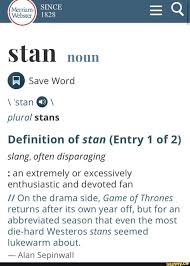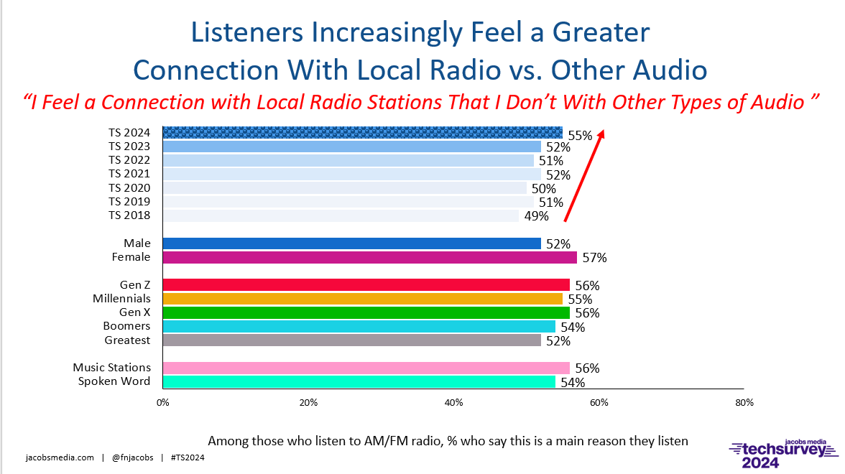
Since he burst onto the scene in the mid-1990s, Eminem (a.k.a Slim Shady a.k.a Marshall Mathers) has been all about musical innovation.
Eminem has broken numerous albums and single sales records, including this amazing feat: 11 consecutive albums debuting at #1 in the U.S. dating back to 2000.
He’s produced and appeared in scores of memorable videos, and was the star of his own film, the iconic 8 Mile. Eminem was inducted into the Rock Hall of Fame two years ago, and has earned a star on Hollywood’s Walk of Fame.
memorable videos, and was the star of his own film, the iconic 8 Mile. Eminem was inducted into the Rock Hall of Fame two years ago, and has earned a star on Hollywood’s Walk of Fame.
From Detroit (but, of course), Eminem has enjoyed unprecedented success in the world of music, but also because of his cultural impact. Leading the Midwest rap movement, he has been credited with affecting scores of artists here in the U.S., and from around the world, not to mention millions of hardcore fans.
 Which brings me to “stans,” another term invented by Eminem. It’s a combination of “stalker” and “fan” and was first used eponymously in a 2000 Eminem song. The term was officially added as a bona fide word by Merriam-Webster’s dictionary
Which brings me to “stans,” another term invented by Eminem. It’s a combination of “stalker” and “fan” and was first used eponymously in a 2000 Eminem song. The term was officially added as a bona fide word by Merriam-Webster’s dictionary
Originally, a “stan” was an obsessed fan, but the term has morphed into a more complimentary or devoted follower, like a Swiftie.
And that’s where this story about “stans” take on renewed relevance. A new story in Billboard by Gil Kaufman cleverly illustrates how the term has come full circle. In its newest incarnation, Eminem is reaching out to “stans” all over the world to tell their stories for an upcoming documentary all about them.
Here’s the Twitter/X post that launched this new “stan” outreach:
👀 Looking for Stans 🎬 for a documentary produced by Eminem & Shady Films. To share your story, please answer the questions here https://t.co/HlUXjtnZn6 pic.twitter.com/sVJ3km5D0v
— Marshall Mathers (@Eminem) April 10, 2024
So if you’re an intrigued “stan,” you click the link which whisks you to a questionnaire with 42 questions, many of them open-ended (e.g., “Would you consider yourself a ‘Stan?’ Why / why not?” or “Do you collect Eminem merch, make Eminem artwork, write fan fiction, etc. If so, please explain in detail.”)
But wait, there’s more. Applicants are also asked to submit a 1 minute video explaining why they’re worthy of “stan” status.
(And you thought my Techsurvey questionnaires were long!)
Other intriguing queries of would-be “stans” checks whether they’ve ever been to Detroit – when and why – if they’ve met Eminem, and how often they’ve listened to his music.
But perhaps the most telling questions are these:
What are some things in your life that you’ve accomplished thanks to Eminem/his music?
Has Eminem or his music helped you through any difficult time?
The last one, in particular, suggests a keen understanding by the artist (and his team) about the power and influence of the music. Both questions cut to the emotional quick that connects artists with their core fans.
Kaufman notes a February story in Variety suggesting the goal of Eminem’s doc is to dive into “the complicated relationship between an artist and their audience.”
 In a statement released by Eminem, his manager, Paul Rosenberg, reveals the prescience of this project:
In a statement released by Eminem, his manager, Paul Rosenberg, reveals the prescience of this project:
“Stans will be the opportunity for us to turn the camera around and ask the audience about being fans – and in some cases, fanatics. This is the study of the relationship between fanbase and artist through the lens of one of Eminem’s most fascinating song and one of the world’s most important entertainers.”
In some ways, this sounds an awful lot like old school testimonials, one of the oldest marketing tricks in the book. But rather than thinking of fans as simply singing your praises, the Eminem project looks to explore the intensity of the artist:fan relationship.
It is also about what we’ve written about in this blog many times over the years – the value of CGM or consumer generated media.
Oddly enough, the Greater Media/Beasley rock stations in Detroit have been in the forefront of these fan-based marketing efforts. While their brands may lack some of the intensity and passion an artist like Eminem has with his fans, radio stations that have worked their audience communities quite well over the years can reap similar benefits.
Back in 2006, WCSX, the Classic Rock station, enlisted listener volunteers to lend the stations their cars, minivans, and trucks as rolling billboards throughout the Motor City. The marketing campaign was called “WCSX Pace Cars.” Marketing director Jennifer Williams spearheaded the effort stitching together a collaboration with a local auto “wrapping” company, along with the encouragement of PD Bill Stedman and GM/market manager Tom Bender. I remember the calls with Greater Media’s legal team as nothing short of episodic.
“WCSX Pace Cars.” Marketing director Jennifer Williams spearheaded the effort stitching together a collaboration with a local auto “wrapping” company, along with the encouragement of PD Bill Stedman and GM/market manager Tom Bender. I remember the calls with Greater Media’s legal team as nothing short of episodic.
The result was a couple dozen automotive works of art driving all over the Detroit metro in support of WCSX. It was one sweet promotion, and it reinforced to me how much impact fans can have. Yes, I blogged about it back then in a post titled “Baby, You Can Drive Our Cars.”
Fast-forward 15 years later, and Scott Jameson arrives in Detroit during COVID and on the brink of WRIF’s 50th anniversary celebration. Thanks to the pandemic, a lot of current and former employees were widely dispersed.
So to gather as much memorabilia, stories, and other content, Scott turned to the audience. Sometimes, you just have to turn it over to the RIFFville community:

The fact is, radio is a natural for fan-type promotions and activities, especially with brands that exude a certain nostalgia or special difference others don’t have.
But in the main, core radio fans (“stans?”) tell us the medium is special. In our “Why Radio?” series in our brand new Techsurvey 2024, we show the bond between station and listeners emerges stronger than it ever has:

The trendline is extremely positive during the years since COVID. Women appear to seek that connection more than men, but let’s not lose sight of the fact every generation breaks the 50% mark, suggesting a universal emotional bond that radio provides that many consumers just don’t derive from other audio platforms.
This explains why scores of fans (who we identified) took part in a brand advocates program that called itself “The Sound Backstagers” (pictured) on behalf of KSWD/Los Angeles. This hardy group exuded many of the traits Eminem is now looking for in his “stans” APB. The rewards weren’t monetary, but instead allowed these special listeners to feel like they were a bigger part of the station, providing them access, modest perks, but also the opportunity to leave the world of common fandom behind for an exciting journey that took them behind the velvet ropes and into the inner workings of a radio station they truly loved.
Eminem is now looking for in his “stans” APB. The rewards weren’t monetary, but instead allowed these special listeners to feel like they were a bigger part of the station, providing them access, modest perks, but also the opportunity to leave the world of common fandom behind for an exciting journey that took them behind the velvet ropes and into the inner workings of a radio station they truly loved.
We sometimes forget the type of impact radio and its colorful history, personalities, and events have on people. But as Eminem and his army of “stans” remind us, the audience is a great resource, always willing to chip in, contribute, and tell a station’s story.
In a world where loyalty is at a premium as few brands have the ability to now win the ever-cynical audience’s trust, many radio stations did the heavy lifting in years past. Whether it’s Baltimore stations that courageously covered the bridge collapse a few weeks back, or stations informing communities hit by weather emergencies, why not turn to your “stans” to remind the audience (and advertisers) why your stations matter – when communities are in their times of greatest need?
 I think back to WCSX’s Pace Car promotion. The team invited me to the station for a “meetup” of the entire fleet’s cars and drivers. My recollection is that these ordinary Detroiters weren’t really compensated, but instead received very basic perks (tickets, etc.) and swag from the station in exchange for CSX co-opting their car or truck’s identity. The “Pace Car” drivers didn’t care (outside of which album/artist grace their vehicle’s exterior). They gladly wanted to help promote CSX in any way they could – and the station came up with a novel way allowing them to do just that.
I think back to WCSX’s Pace Car promotion. The team invited me to the station for a “meetup” of the entire fleet’s cars and drivers. My recollection is that these ordinary Detroiters weren’t really compensated, but instead received very basic perks (tickets, etc.) and swag from the station in exchange for CSX co-opting their car or truck’s identity. The “Pace Car” drivers didn’t care (outside of which album/artist grace their vehicle’s exterior). They gladly wanted to help promote CSX in any way they could – and the station came up with a novel way allowing them to do just that.
These Classic Rock fans weren’t really “stans” in the most fanatical sense. But they were eager to do their part to help market their favorite radio station, while capturing a little celebrity themselves. After all, isn’t that what it means to be a “stan?” By deeply showing your fandom, you bring attention to yourself.
I can’t help but wonder if Eminem was maybe listening to some Classic Rock on Detroit radio back in 2006.
- What If Radio Tried Something Right Out Of Left Field? - May 9, 2025
- Why Radio PDs Are A Lot Like NBA Coaches - May 8, 2025
- Memo To Radio: We Have Met The Enemy And It Is… - May 7, 2025




Ask anyone who had a “Loop” shirt in Chicago back in the day, I think we’re talking about the same thing. Sports teams who win a championship and folks are walking around with team swag. To paraphrase Mike Damone in Fast Times…thats the attitude.